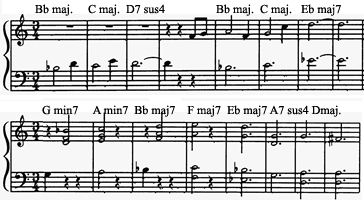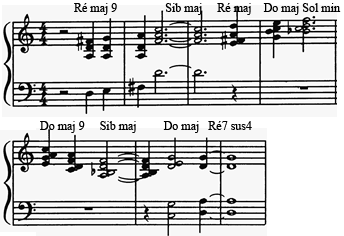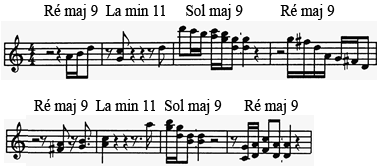1. String arranging
Not often used as solosist, the string instruments play sustained chords in order to support the melody. When used melodically, the strings are, most of the time, voiced in unison or octave in order to provide melodic backgrounds.
What is true is the loss of ability of many classical musicians, to perform "swing" or "groovy" melodies, except for the most famous jazz violin players such as Stéphane Grappelli, Jean Luc Ponty or Didier Lockwood for example.
On the harmonic point of view, we can use soloist ensembles including 4 or 5 instruments ( quartet or quintet ): 2 violins, 1 alto, 1 cello and 1 double bass.
But most of the time, larger string ensembles are not used in recording studios for financial purpose. Instead of this, many arrangers use samplers that can be really useful in string arranging.
Example
Our example uses not less than 4 string parts organized like this :
a. String ensembles
In the introduction with a symphonic color, the string ensemble progressively enters from the low to the high register, with 1, 2, 3 then 4 parallel harmonized voices :

The harmonized strings are mainly used in the choruses and the break, always keeping a melodic direction, and creating a counter-melody to the lead voice.

In the first part of the bridge, the strings play a counter-melody in unison, and 3 voice chords in the 2nd part.

In the third verse, the strings start a conversation with the lead voice, by alternating unisons and 2 voice chords.
